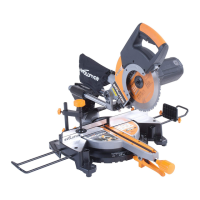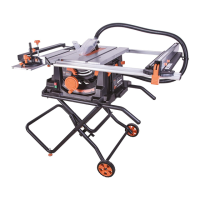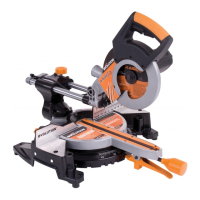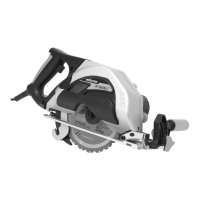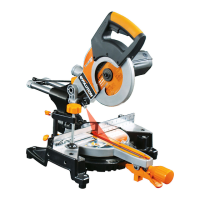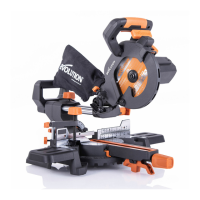16
www.evolutionpowertools.com
A practical trial on scrap material may be useful to determine
the best stroke rate for any particular material or application.
GENERAL CUTTING
WARNING: Never start the machine with the blade in contact
with the workpiece.
• Selectalowstrokerate.
• Holdthemachinewithbothhands.
• Ensurethattheworkpiececontactplateisrmlyincontact
with the workpiece but that the blade is not. (Fig. 6).
• Switchonthemachine.
• Verygradually,andholdingthemachinermly,introducethe
blade into the workpiece until it is cutting successfully.
• Operatethestrokeratecontroldialuntiloptimumcutting
performance is achieved.
• Never‘force’theblade.Allowthebladetocutthroughthe
workpiece without applying undue pressure. Forcing the
blade will reduce blade life, increase the likelihood of blade
breakage, and put strain on the machines motor.
WARNING: If the saw blade should jam, switch o the machine
immediately and disconnect from the mains supply.
JAMMED BLADES
WARNING: Jammed blades may be very hot and/or
contaminated with debris. The operator should exercise great
caution when attempting to remove a ‘jammed’ blade,
and employ all necessary PPE.
To remove a jammed blade the kerf (the saw cut made by the
blade) will have to be widened.
• Removethemachinefromthebladebyoperatingtheblade
clamping lever, and carefully easing the machine from the
jammed blade.
• Widenthekerfwithasuitabletooluntilthebladecanbe
pulled from the workpiece.
PLUNGE CUTTING
WARNING: Plunge cutting is a technique that must only be
used on soft building materials such as plasterboard etc. It is
not a suitable procedure for use on harder materials, and must
never be employed on metallic materials.
Note: This technique should not be attempted by
inexperienced operatives.
Fig. 6

